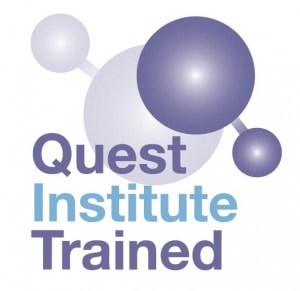 AMDR stands for Applied Memory Deconsolidation and Reconsolidation and is a technique born out of EMDR (Eye Movement Desensitisation & Reprocessing). AMDR is ‘based on a clear understanding of the neuroscience underpinning the EMDR process’ and is highly effective in treating trauma, as it combines Somatic Psychotherapy, Cognitive Hypnotherapy, Mindfulness and EMDR in a neuroscience-based approach which is safe, gentle, flexible and adaptive to the needs of each client. AMDR was created by Joshua Issac Smith (Psychotherapist & Former Assistant Director of the London EMDR Centre) and Gill Wood (Quest Cognitive Hypnotherapist, NLP Coach and EMDR Supervisor). What is trauma?People can suffer from ‘Big T’ traumas, life changing events like loss of limb, or car accidents, rape or loss of a loved one. This may result in what has been known as PTSD (Post-Traumatic Stress Disorder). Small ‘t’ traumas, such as being bullied at work or as a child, being cheated on by a partner, being humiliated in public or having a near miss as a truck passes you by as a pedestrian, can still elicit the same response in the body; the activation of fight/flight/freeze. It is therefore not the size or awfulness off the event that creates the trauma response, but the meaning that you give to it in that moment. Trauma is simply a Significant Emotional Event (SEE) which has big meaning to you and therefore big impact. So, if you thought to yourself as that truck only just missed you, “OMG, I’m going to die! My kids will be without a mother!” that moment, perceived as a threat to life as you know it, can result in a part of you being split off into a ‘trauma self’ where it continually plays out the worst-case scenario, stuck in a closed loop, where no new information can get in. When we are traumatised by an event, part of the rational thinking brain is shut down and can no longer process the event as a memory that happened in the past. The trauma memory or ‘trauma self’ essentially becomes frozen in time and can be emotionally triggered by events in the present, so it feels as if it is happening all over again. Sometimes the trauma can lie dormant for long periods of time, only to be triggered when something that the brain perceives as being vaguely similar, occurs in the present. When a pattern match is made, this triggers the body into the fight, flight, freeze response and the memory replays as if it is real and happening in the now. Sometimes, because the mind has dissociated and disconnected from the body to protect you, the unconscious mind will not allow you to remember the trauma and instead you re-live the memory through the often, intense feelings and sensations in the body. How does AMDR work?AMDR works to re-process the trauma memory and bring the rational brain (pre-frontal cortex) back online, so that the part that was shut down during the SEE can receive new information (“this is no longer happening, I am safe now”) and everything can re-integrate. The emotion discharges and is no longer held in the body, which means you can relieve the physical symptoms of intense stress, and the memory can pass into long-term storage, as if it was like any other memory. AMDR puts great emphasis on resourcing and stabilising the client before any re-processing work takes place, which is what makes this an effective and safe treatment for trauma. Bi-Lateral Stimulation (BLS) through eye movements or tapping may then be used to help the brain re-process the memory through the left and right hemispheres. After which, new positive resources and belief statements are installed. AMDR sits within the Quest Cognitive Hypnotherapy model as just one of the many tools that a QCH therapist can utilise to provide a bespoke treatment plan for sufferers of trauma. Further information, resources and help to cope with trauma can be found on my website. If you have some difficult experiences that you need to process, please get in touch for a free chat. References & Resources Quotes in the first paragraph of this article are taken from the AMDR Module One Workbook by Gill Wood & Joshua Issac Smith.
Further information on AMDR can be found at https://www.amdr.info/ Appointments for treatment can booked through the Back in Tune Coaching website. https://www.facebook.com/backintunecoaching/ https://www.instagram.com/backintunecoaching
0 Comments
Leave a Reply. |
AuthorMichelle Falcon is an experienced teacher, QCH therapist and personal development coach, who uses the tools of Neuro-Linguistic Programming (NLP) to help people to make positive changes and get the best out of their lives. ArchivesCategories |
Quick Links |
|
© COPYRIGHT Michelle Falcon 2024
Back In Tune Coaching @ Join The Dots Consultancy ALL RIGHTS RESERVED. All photographs are reproduced with consent |
Proudly powered by Weebly
|



 RSS Feed
RSS Feed




